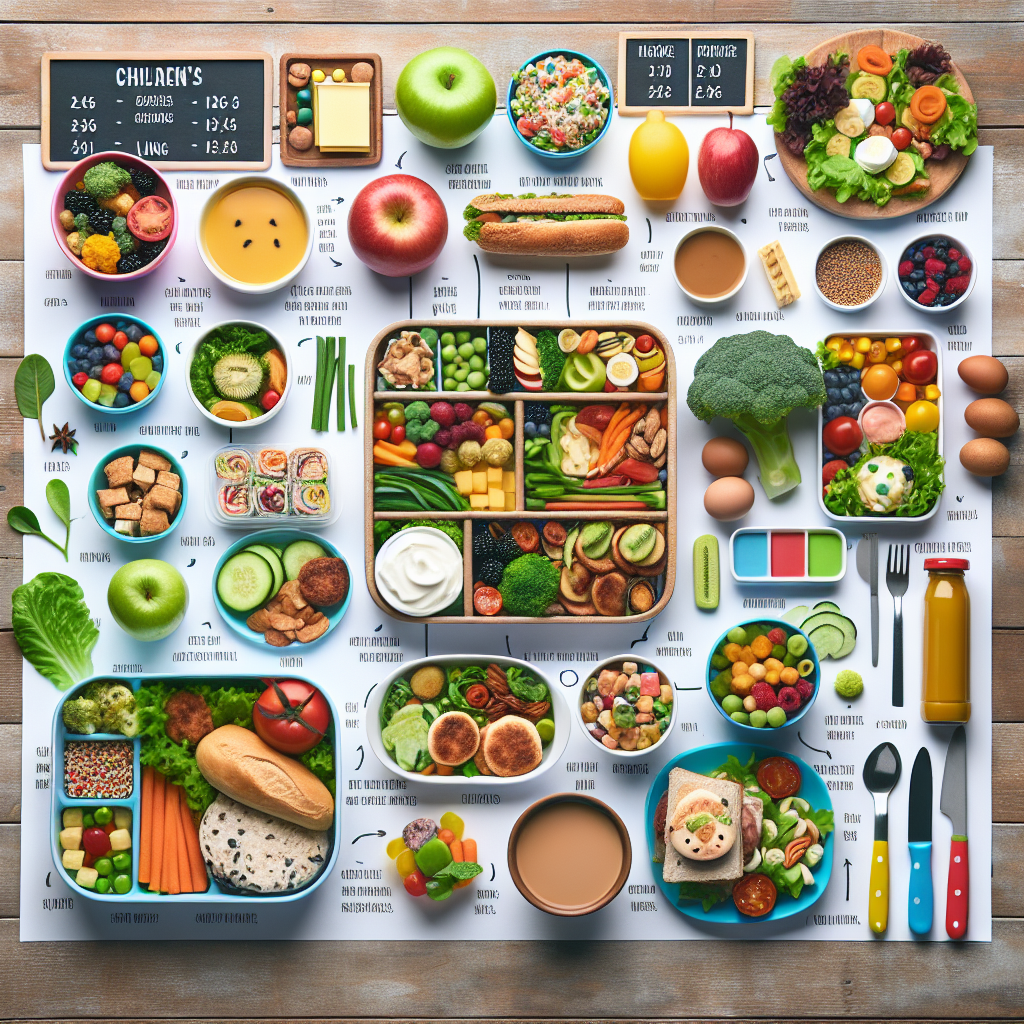Lunch for Children: Nutritional Guide by Age
The importance of lunch in children's nutrition
Lunch is a crucial meal in children's daily nutrition, having an important role in providing the necessary energy for the whole day. In order for the little ones to have a harmonious development and be in top shape, it is essential that the lunch is balanced and includes all the necessary nutrients. It must be adapted according to the child's age, as nutritional needs vary as the child grows.
Lunch for children under 2 years old
In children under 2 years old, food is predominantly liquid, and the transition to solid food must be done gradually. Lunch should include pureed vegetables rich in vitamins and minerals, whole grains and, when appropriate, minced or well-boiled meat. It is important to note that healthy choices must be made and the diversity of foods introduced into the diet must be emphasized.
Lunch for preschool children (2-5 years)
For preschool children, lunch should be varied, colorful and full of energy. A piece of grilled white or red meat, a bowl of steamed vegetables or a puree of root vegetables can make up a balanced and satisfying meal. Also, dairy and fruit should not be missing, which are an important source of calcium and vitamins.
Lunch for school children (6-12 years)
When it comes to school-age children's lunches, the complexity of food can increase. Sandwiches with wholemeal bread, pasta with healthy sauces or salads with pieces of meat or fish are excellent lunch options for this age group. One aspect to take into account is the intake of sufficient proteins, essential for the development of muscles and bones.
Lunch for teenagers (13-18 years)
Teenagers need a hearty lunch to support their fast pace of life. This is where robust nutritional combinations come into play: meat or fish, vegetables and whole grains. Moreover, this is the time to encourage them to choose healthy meals over processed fast food snacks.
How much does the quality of the ingredients matter?
The quality of the ingredients used in the preparation of lunch has a significant impact on children's health. Always choose fresh and, as much as possible, organic produce. Paying attention to where food comes from and how it is cooked contributes to a healthy lifestyle for children.
Healthy and quick lunch recipe ideas
An ideal lunch doesn't have to take hours to prepare. There are tons of recipes that can be made quickly and are both nutritious and kid-friendly. For example, a wrapped chicken and vegetable wrap is a great option for a healthy lunch that can also be packed.
How to keep your child interested in healthy foods
Menu variety and attractive food presentation are two essential strategies to keep children interested in healthy eating. Let the children participate in the preparation of the meal and encourage them to try new combinations of tastes.
Lunch and school performance
The connection between a healthy lunch and children's school performance should not be underestimated. A balanced diet helps maintain concentration and better assimilation of information. Make sure little ones have a lunch that will keep them active and interested throughout the school day.
Conclusion
In conclusion, lunch is an essential meal in the child's diet and must be adapted to the specific nutritional needs of each age stage. Through a balanced and healthy diet, we can ensure optimal physical and mental development of children and prepare them for daily challenges. This nutritional guide should serve as a starting point for creating healthy and appetizing menus for your little ones. Be sure to introduce regularity into your children's dining experiences and you will see the positive results over time.
Call to action
For more baby nutrition tips and delicious recipes, feel free to visit our special section in the store or subscribe to our newsletter. together, we can build a solid foundation for a healthy lifestyle for our children!














































































































































